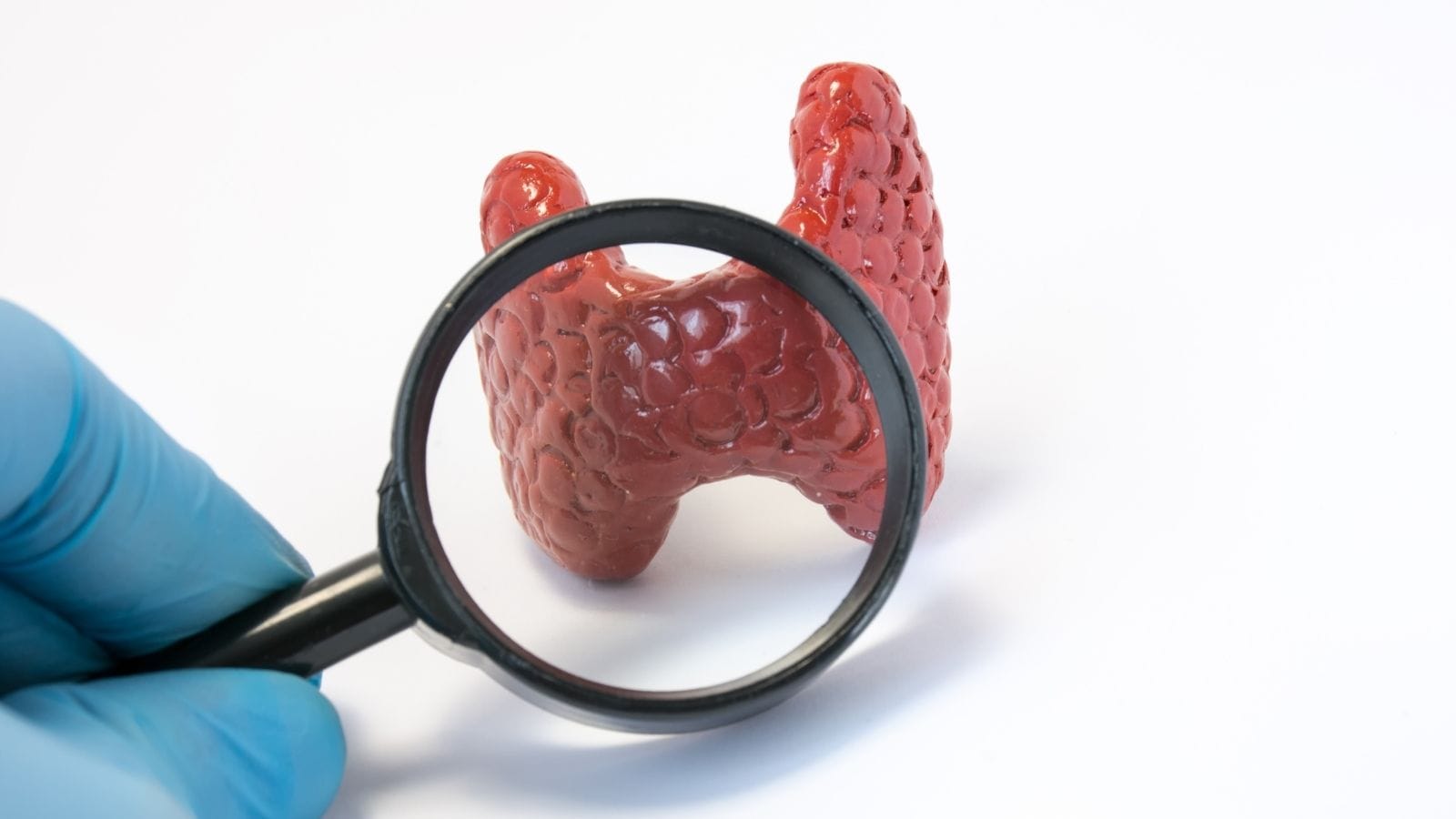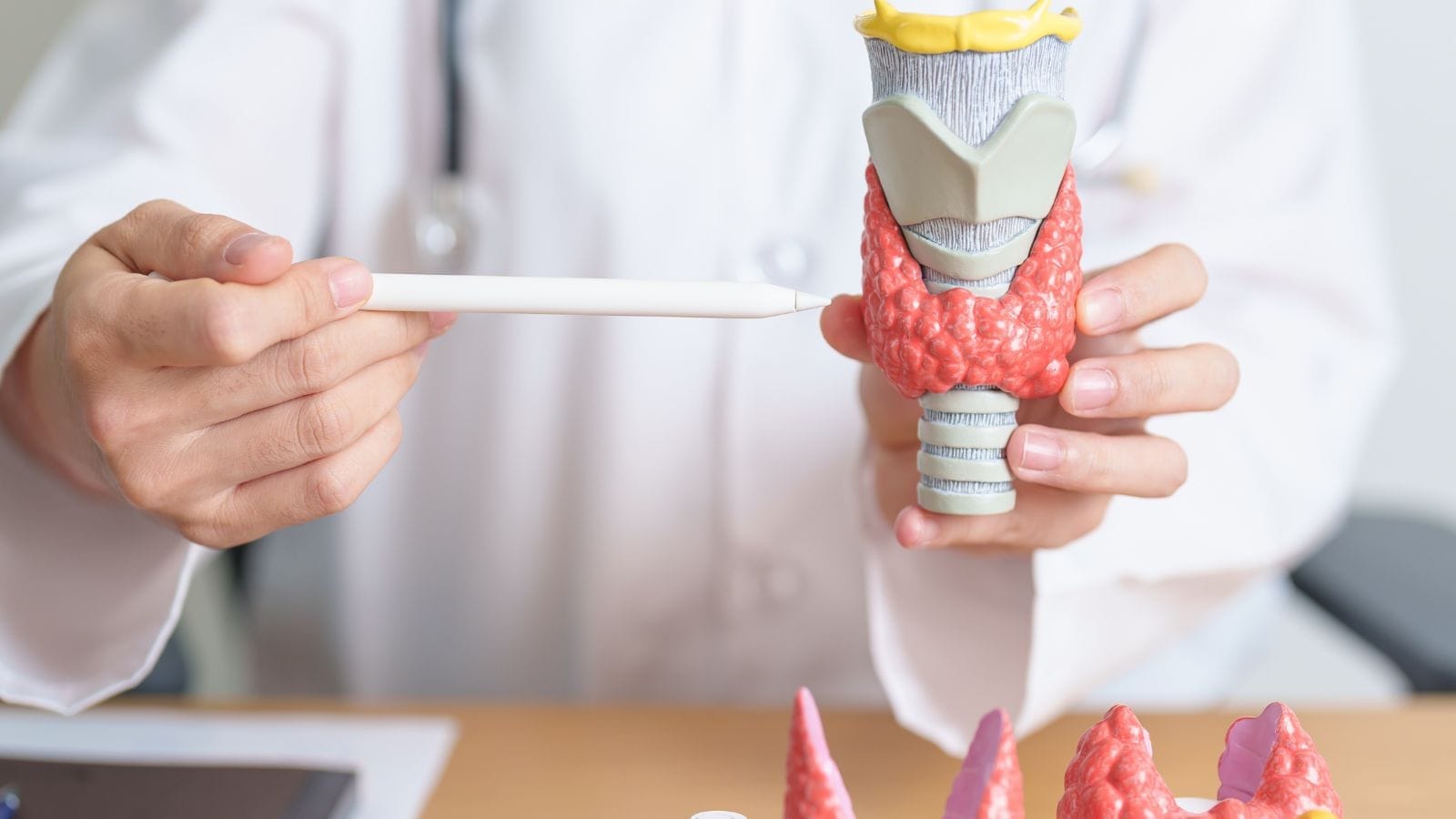Hydrocele is the accumulation of fluid around the testicle, leading to painless swelling in the scrotum. It can occur due to congenital factors, trauma, infection, or inflammation, and is more common in newborns and older men.
Diagnosis of hydrocele is made by physical examination and ultrasound imaging. It is usually benign but must be distinguished from more serious conditions such as hernias or tumors.
Treatment depends on the cause and severity. In mild cases, hydrocele may resolve spontaneously, while persistent or symptomatic cases often require surgical intervention.
Surgical repair involves draining the fluid and removing the sac to prevent recurrence. Prognosis after treatment is excellent, and complications are rare.
| Definition | – Hydrocele is a swelling that occurs as a result of excessive fluid accumulation around the testicles or within the scrotum. It is generally painless and may be seen in children or adult males. |
| Symptoms | – Swelling in the scrotum (usually painless) – A feeling of pain or discomfort – Tightness of the scrotal skin along with the swelling – Pain or tenderness in rare cases |
| Causes | Congenital Hydrocele: – Incomplete closure of the peritoneal canal during the descent of the testes from the abdomen to the scrotum in the wombHydrocele in Adults: – Infection or inflammation (e.g., epididymitis, orchitis) – Scrotal trauma – Testicular tumors – Increased intra-abdominal fluid (such as due to cirrhosis or heart failure) |
| Risk Factors | – Premature birth (in infants) – History of scrotal trauma or surgery – Infections (especially sexually transmitted infections) – Conditions that cause intra-abdominal fluid accumulation |
| Types | – Communicating Hydrocele: Hydrocele with a connection to the abdominal cavity; fluid can move in and out. – Non-communicating Hydrocele: No connection to the abdominal cavity, isolated fluid accumulation in the scrotum. |
| Diagnostic Methods | – Physical examination (assessment of scrotal swelling and tension). – Transillumination: Evaluation of fluid accumulation using a light source (hydrocele fluid transmits light). – Ultrasonography (to differentiate hydrocele from tumors or other masses). |
| Treatment Options | – Observation: Painless and small hydroceles usually do not require treatment and may resolve spontaneously (especially in infants). – Surgical Treatment (Hydrocelectomy): Removal of the fluid and sac for large, symptomatic, or complicated hydroceles. – Needle Aspiration: Temporary solution by draining the fluid with a needle (however, the risk of recurrence is high). |
| Complications | – Rarely may lead to infertility (due to compression of the testicle). – Increased risk of infection. – Cosmetic and physical discomfort if the hydrocele is large. |
| Prevention | – Protection from scrotal trauma. – Safe sexual practices to prevent sexually transmitted infections. – Early treatment of conditions that may cause intra-abdominal fluid accumulation. |
| Recovery Process | – Recovery after surgery usually takes 1-2 weeks. – Mild pain and swelling may be seen after the procedure but resolve quickly. |

Prof. Dr. Özgür KILIÇKESMEZ
Interventional Radiology / Interventional Neuroradiology
Prof. Dr. Kılıçkesmez holds the Turkish Radiology Competency Certificate, the Turkish Interventional Radiology Competency Certificate, Stroke Treatment Certification, and the European Board of Interventional Radiology (EBIR). In his academic career, he won the Siemens Radiology First Prize in 2008.
What Is Hydrocele?
Hydrocele is a health problem that occurs due to fluid accumulation between the membranes surrounding the testicles and manifests as distinct swelling in the scrotum. It is mostly congenital and tends to resolve spontaneously during infancy. However, it can also develop in adults due to injuries, infections, or inflammation. This condition has been described in ancient medical literature and throughout the centuries. The term derives from the Greek words “hydro” (water) and “kele” (swelling). Hydrocele, which is usually painless, may require treatment when it reaches uncomfortable sizes or causes additional problems such as infection. Treatment options include observation, aspiration of the fluid, or removal by surgical methods.
What Are the Causes of Hydrocele?
Hydrocele occurs with the accumulation of fluid between the layers of the tunica vaginalis around the testicle and may be due to congenital or acquired causes.
Congenital Causes:
- Patent processus vaginalis
- In rare cases, canal of Nuck in girls
In congenital hydrocele, if the processus vaginalis does not close during fetal development, fluid may pass from the abdominal cavity to the scrotum. Although this is more common in males, hydrocele can rarely occur in girls if the canal of Nuck remains open.
Acquired Causes:
- Fluid imbalance in the tunica vaginalis
- Infections such as epididymitis or orchitis
- Parasitic infections such as filariasis
- Scrotal or testicular trauma
- Testicular and surrounding tumors
- Postoperative complications
- Systemic diseases related to cirrhosis and ascites
- Circulatory problems such as heart failure
- Idiopathic cases of unknown cause
In acquired causes, local problems such as infections, injuries, or tumors, or systemic conditions such as cirrhosis and heart failure, may trigger hydrocele development. On the other hand, cases of hydrocele that develop in adults without a specific cause are termed idiopathic.
How Common Is Hydrocele?
Hydrocele is defined as fluid accumulation in the scrotum and has a variable prevalence across different age groups and demographics. A study from Sweden noted that about 100 out of every 100,000 men seek specialist care each year for hydrocele or spermatocele, with 17 of these cases receiving treatment. Based on Swedish data, it is estimated that there are more than 100,000 new hydrocele cases in the European Union each year.
Demographic distribution:
- Common at birth in infants
- Usually resolves spontaneously by the age of one
- More common in men over 40
- Common in males, rare in females
- More frequent in areas where lymphatic filariasis is endemic
Geographically, an increase in the frequency of hydrocele has been observed especially in rural regions of Africa and Asia, particularly in areas where lymphatic filariasis is widespread. For example, a study in rural Nigeria found hydrocele to be more common in cases of lymphatic filariasis. In such regions, inadequate hygiene conditions and limited access to medical care may also contribute to the higher prevalence. The prevalence of hydrocele is considered an important public health issue, and early diagnosis and treatment access are recommended, especially for people in high-risk areas.
How Does Hydrocele Develop?
Hydrocele is a condition caused by the accumulation of serous fluid around the testicle and may occur due to congenital or acquired reasons. In congenital hydroceles, failure of the processus vaginalis to close during fetal development allows peritoneal fluid to flow into the scrotum, leading to hydrocele formation. Acquired hydroceles are due to imbalance between fluid production and absorption.
Causes of acquired hydrocele:
- Infection or inflammation
- Trauma
- Testicular tumors
- Postoperative complications
In these cases, especially infections and inflammation may trigger fluid accumulation in the tunica vaginalis. Trauma to the testis or its surrounding area may disrupt the absorption process and lead to accumulation. In tumor cases, situations such as blockage of lymphatic drainage may be observed. In addition, hydrocele may develop after surgical procedures such as hernia or varicocele operations.
The pathophysiology of hydrocele is related to the imbalance of fluid dynamics. A small amount of fluid normally exists between the visceral and parietal layers of the tunica vaginalis, allowing the testicle to move comfortably. The formation of hydrocele is associated with increased fluid production or decreased absorption. In congenital cases, a patent processus vaginalis allows constant flow of peritoneal fluid. In acquired cases, factors such as trauma, infection, or tumor may disrupt the balance. Understanding this is important for determining the appropriate treatment method.
What Are the Symptoms of Hydrocele?
Hydrocele is a generally painless swelling of the scrotum resulting from fluid accumulation around the testicle. Symptoms include marked enlargement and a feeling of fullness in the scrotum. The swelling may vary throughout the day and sometimes cause a mild sensation of heaviness. Although hydrocele is usually painless, it may cause discomfort in some cases.
Symptoms in short:
- Painless swelling
- Feeling of fullness in the scrotum
- Size may change throughout the day
- Discomfort in rare cases
Hydrocele is usually distinguished from testicular tumors by its soft tissue and fluid-filled structure. Unless accompanied by infections such as epididymitis, it does not present systemic symptoms. General health complaints such as fever or nausea are not seen in hydrocele, but large hydroceles can affect patient comfort. It is important to consult a specialist for evaluation and planning appropriate treatment.
How Is Hydrocele Diagnosed?
The diagnosis of hydrocele is made through the patient’s medical history, physical examination, and, if necessary, imaging techniques. This process not only confirms fluid accumulation but also helps to rule out other possible conditions.
Patient history
- Age of onset
- Duration of symptoms
- Changes in swelling
- Accompanying pain or discomfort
Physical examination
- Size and symmetry of the scrotum
- Evaluation of contents by palpation
- Observation of fluid accumulation by transillumination
Imaging methods
- Ultrasound (to confirm fluid accumulation and exclude other conditions)
Differential diagnosis is very important in the diagnosis of hydrocele, as other conditions such as inguinal hernia, testicular tumors, or epididymal cysts may present similar symptoms. Ultrasound is frequently used as a non-invasive method to clarify the presence of fluid and to exclude these possibilities. Thanks to differential diagnosis, appropriate treatment for hydrocele is determined and complications that may arise if left untreated are prevented.
How Is Hydrocele Treated?
Interventional methods in the treatment of hydrocele are determined according to the patient’s level of complaints, the size of the hydrocele, and eligibility for treatment. Interventions are divided into two main groups: minimally invasive procedures and surgical methods.
Minimally Invasive Methods:
- Aspiration: Draining the accumulated fluid by inserting a thin needle under the skin. However, the risk of recurrence is high.
- Sclerotherapy: After aspiration, injection of a sclerosing agent to prevent re-accumulation of fluid.
Commonly used agents:
- Tetracycline
- Doxycycline
- Polidocanol
- Sodium tetradecyl sulfate
Minimally invasive methods provide quick relief but are limited by the likelihood of fluid recurrence and some side effects (pain, infection). These methods are preferred in patients who are not suitable for surgery or have mild symptoms.
Surgical Methods:
- Hydrocelectomy
Surgical techniques:
- Jaboulay Procedure: Removal of the hydrocele sac
- Lord Procedure: Plication of the sac by folding
Potential complications:
- Hematoma
- Infection
- Damage to adjacent tissues
What Are the Complications of Hydrocele?
Complications of hydrocele may occur when the condition does not resolve on its own and intervention is required. The presence of hydrocele may cause certain health problems and negatively affect quality of life. The main complications are pain and discomfort; large hydroceles may lead to movement limitation and pressure in the scrotum. If left untreated, the risk of infection and inflammation also increases.
Complications in short:
- Pain and discomfort
- Movement restriction
- Feeling of pressure in the scrotum
- Risk of infection
- Potential for inflammation
Some complications may also develop after surgical intervention. For example, hematoma or infection may occur after surgery. These complications are generally controlled with appropriate care and medication, but in rare cases, secondary intervention may be necessary. In advanced cases, hydrocele may adversely affect circulation in the spermatic cord and reduce blood flow to the testicles. In the long term, this may lead to impaired testicular function and even infertility.
Although hydrocele complications are rare, regular doctor check-ups are important. Hydroceles detected early are usually managed before causing serious complications, so monitoring symptoms and timely treatment are effective in reducing the risk of complications.
When Can Hydrocele Be Treated?
The necessity for hydrocele treatment depends on specific clinical findings and the level of discomfort. In some cases, treatment becomes inevitable. Especially in symptomatic hydroceles, complaints such as pain, feeling of pressure, and discomfort due to large size require intervention. In addition, “communicating hydrocele” cases in children that do not improve within the first two years or have a persistent connection with the abdominal cavity may require surgical intervention.
Other situations that require treatment include:
- Symptomatic hydrocele
- Persistent childhood hydrocele
- Hydrocele with complications (infection, bleeding, rupture)
- Diagnostic uncertainty or suspicion of underlying pathology
- Patient preference or quality of life concerns
The need for surgical intervention is also determined by the presence of diagnostic doubt. For example, if a tumor is suspected along with scrotal swelling, detailed evaluation is necessary. Additionally, if the patient experiences difficulties in daily life due to the size or appearance of the hydrocele, treatment may be considered. In every case, the decision is individualized according to the patient’s general health, age, and treatment expectations.
When Is Hydrocele Treatment Not Appropriate?
Hydrocele treatment may not be suitable in every case, and intervention should be postponed in some specific situations. Contraindications to surgery are evaluated based on the patient’s current health and potential risk factors. Main conditions to consider before intervention include:
- Active infection
- Coagulation disorders or anticoagulant therapy
- Uncontrolled comorbidities
- Asymptomatic hydrocele
- Suspicion of malignancy
- Poor surgical candidates
The patient’s overall health status and comorbidities should be considered when planning hydrocele treatment. In particular, surgery should be postponed in the presence of infection and the infection should be treated first. In patients with coagulation problems or those using anticoagulant drugs, treatment may be delayed to reduce the risk of bleeding. Surgery is also considered risky in those with uncontrolled diabetes or serious cardiovascular disease. If hydrocele does not cause symptoms, intervention may not be preferred based on a risk-benefit assessment.
In some cases, an inguinal approach is recommended instead of a scrotal approach in patients suspected of testicular cancer, to reduce the risk of malignant cell spread. After evaluating the patient’s individual condition, appropriate treatment options are determined if needed.
What Is the Recovery Process After Hydrocele?
The recovery process after hydrocele surgery includes several important steps for patients to follow. After surgery, patients are monitored, and their vital signs and general condition are evaluated. Pain is likely during this period; doctors usually recommend painkillers such as paracetamol or ibuprofen.
Wound care is the most critical phase of recovery. The bandage should remain in place and dry for the first 24-48 hours. Following hygiene rules helps prevent the risk of infection. Patients should be careful until the stitches dissolve on their own.
Physical activity should be limited during recovery. In the first few days, heavy lifting and strenuous activities should be avoided. Driving or operating machinery is allowed 24 hours after surgery. Supportive underwear helps reduce swelling in the scrotum.
Complications such as mild swelling and bruising in the scrotum may occur; these usually resolve on their own. However, if signs of infection such as redness, increased warmth, or discharge are observed, medical help should be sought. In addition, follow-up appointments should not be neglected, and doctor’s recommendations should be followed throughout the recovery process.
How Can Hydrocele Be Prevented?
Preventing hydrocele may be possible with several steps that protect scrotal health. These measures aim to reduce factors that may lead to hydrocele, especially in adults, and can positively affect quality of life. Attention should be paid to the following:
- Use of protective equipment in necessary sports
- Prompt treatment of scrotal infections
- Safe sexual practices
- Regular medical check-ups
Along with these measures, individuals should pay attention to changes in the scrotal area and consult a doctor if any abnormality is noticed. Infections or inflammations left untreated for a long time may lead to hydrocele in later stages, so early diagnosis and treatment can prevent serious complications. Hygiene is also important to maintain scrotal health.
Differences Between Hydrocele Surgery and Interventional Radiological Treatment
| Criteria | Surgery (Hydrocelectomy) | Interventional Radiological Treatment (Aspiration + Sclerotherapy) |
| Method of Application | Removal of fluid and sac structure via scrotal incision | Fluid drained by needle and sclerosing agent injected |
| Invasiveness | Moderate (involves surgical intervention) | Low (minimally invasive, injection-based) |
| Hospital Stay | Usually discharged the same day (1 day) | Same-day discharge |
| Recovery Process | Recovery within 1-2 weeks | Generally 1 day |
| Type of Anesthesia | Usually general or spinal anesthesia | Local anesthesia |
| Risk of Complications | Infection, bleeding, hematoma, risk of recurrence | Infection, pain, fluid re-accumulation |
| Efficacy | High; provides a permanent solution | Lower; higher recurrence rate |
| Suitability | Usually preferred in young and middle-aged men | For patients not suitable for or not preferring surgery |
| Recurrence Risk | Low (rarely recurs) | High (especially if sclerosing effect is insufficient) |
| Frequency of Use | Common; gold standard treatment | Less preferred; considered as an alternative |
Frequently Asked Questions
What are the symptoms of hydrocele?
Hydrocele usually presents as a painless swelling in the scrotum due to fluid accumulation around the testicles. The swelling is often more pronounced later in the day and may cause a feeling of heaviness or discomfort. Most of the time, it does not cause pain, but when it becomes large, it can be uncomfortable during walking or sexual intercourse. If scrotal swelling is noticed, a healthcare professional should be consulted to rule out other possible conditions.
Are the causes of hydrocele different in children and adults?
Yes, the causes of hydrocele are different in children and adults. In infants, hydrocele usually occurs because the processus vaginalis does not close properly before birth, leading to accumulation of abdominal fluid around the testicle. In adults, hydrocele may result from trauma to the scrotum or infections such as epididymitis. Hydrocele in adults may also develop without a known cause.
What complications can occur if hydrocele is not treated?
Untreated hydrocele can lead to inguinal hernia and allow intestinal tissue to protrude into the groin. If the hydrocele fluid becomes infected, complications such as pain and fever may be observed. If left untreated, the size of the hydrocele may increase and cause discomfort, restrict physical activities, and result in psychological stress. In rare cases, long-term pressure can impair testicular function and negatively affect fertility.
How long is the recovery period after hydrocele surgery?
The recovery period after hydrocele surgery (hydrocelectomy) generally allows for light activities within a few days, while full recovery is expected within 2-4 weeks. Swelling and discomfort in the testicular area are common in the first days and usually subside within a few weeks. To support recovery, heavy lifting, intense physical activities, and sexual intercourse should be avoided for the first two weeks after surgery. Wearing supportive underwear and applying ice may help reduce swelling and discomfort. Following your doctor’s postoperative instructions will speed up the recovery process.

Girişimsel Radyoloji ve Nöroradyoloji Uzmanı Prof. Dr. Özgür Kılıçkesmez, 1997 yılında Cerrahpaşa Tıp Fakültesi’nden mezun oldu. Uzmanlık eğitimini İstanbul Eğitim ve Araştırma Hastanesi’nde tamamladı. Londra’da girişimsel radyoloji ve onkoloji alanında eğitim aldı. İstanbul Çam ve Sakura Şehir Hastanesi’nde girişimsel radyoloji bölümünü kurdu ve 2020 yılında profesör oldu. Çok sayıda uluslararası ödül ve sertifikaya sahip olan Kılıçkesmez’in 150’den fazla bilimsel yayını bulunmakta ve 1500’den fazla atıf almıştır. Halen Medicana Ataköy Hastanesi’nde görev yapmaktadır.









Vaka Örnekleri